Make your own tzatziki – just like in Greece!
Creamy tzatziki is a must for any mezze. Or when barbecuing, picnicking, snacking – the list is long. Here you can find out how to make the best tzatziki yourself and what you need to bear in mind. Let’s go to what is probably the best recipe for Greek tzatziki. Have a piece of pita ready!
What is tzatziki?
Tsatsiki, also known as tzatziki or tzatziki, is an incredibly tasty dip from Greece. It is made from high-fat yogurt, cucumber, garlic and a little dill. You can also find variations of this creamy dip in the Levant – e.g. in Turkey or Cyprus.
It is traditionally served as an appetizer with bread and is part of the Greek meze. However, the yoghurt dip is also a versatile side dish for many dishes, e.g. gyros, and should be served fresh for the best taste.
The ingredients for original Greek tzatziki
I had previously only known yoghurt cream as a spicy garlic dip and was surprised when a friend with Greek roots told me his family recipe. Because it only used a little garlic. I was inspired and created a subtle recipe.
The tzatziki ingredients you need for this recipe are as follows:
- Greek yogurt (10% fat)
- Cucumber
- Garlic
- Salt and pepper
- Dill
- White wine vinegar
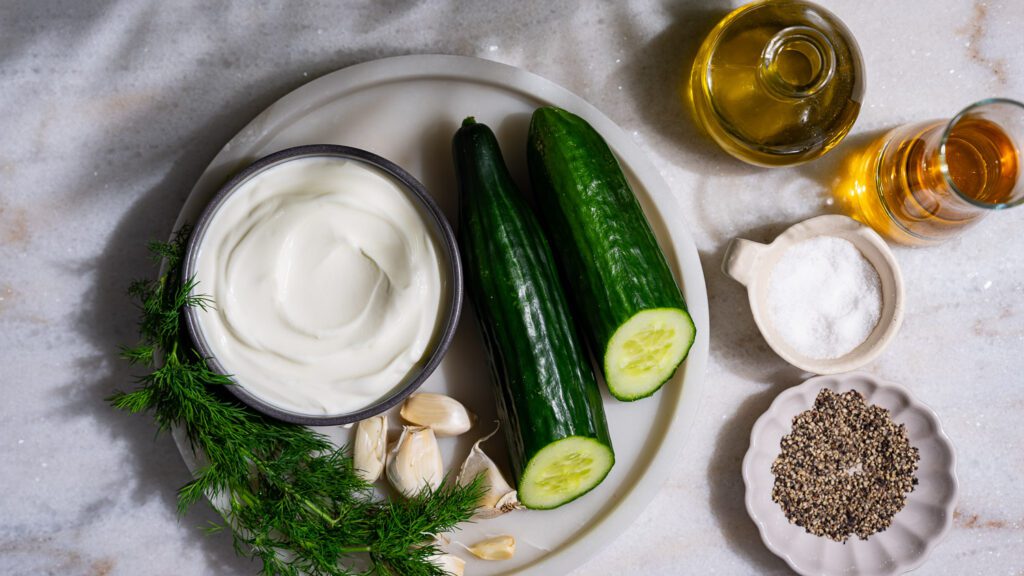
These tzatziki ingredients together make a dip that tastes as if it came straight from a Greek taverna. But before you start mixing everything together straight away, you should prepare the ingredients properly.
How easy it is to make tzatziki yourself
Greek tzatziki: you are now well informed about the tzatziki ingredients. Now a brief overview – these are the simple steps for your perfect yoghurt and garlic cream:
- Cucumber: Peel, grate and drain.
- Garlic: Peel and crush very finely.
- Dill: Pluck and finely chop.
- Prepare the tzatziki: Mix all the ingredients together to make a creamy dip.

The right cucumber for tzatziki
Alongside the creamy yogurt, cucumber is one of the main ingredients in tzatziki and preparing it properly is really important for the perfect creaminess.
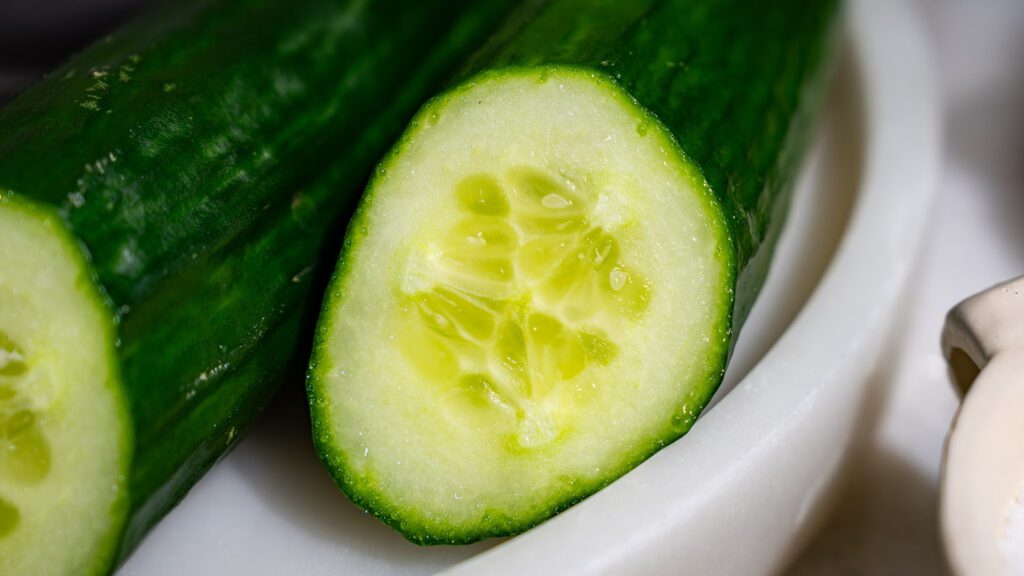
- Peeling the cucumber: First you should peel the cucumber with a vegetable peeler. You can of course leave the peel on, but it is a little too hard for the perfect consistency.
- Remove the seeds from the cucumber: After peeling, remove the seeds from the cucumber. To do this, cut them open lengthwise and go along the core with a small spoon to push out the rather watery seeds. This way your tzatziki won’t get watered down.
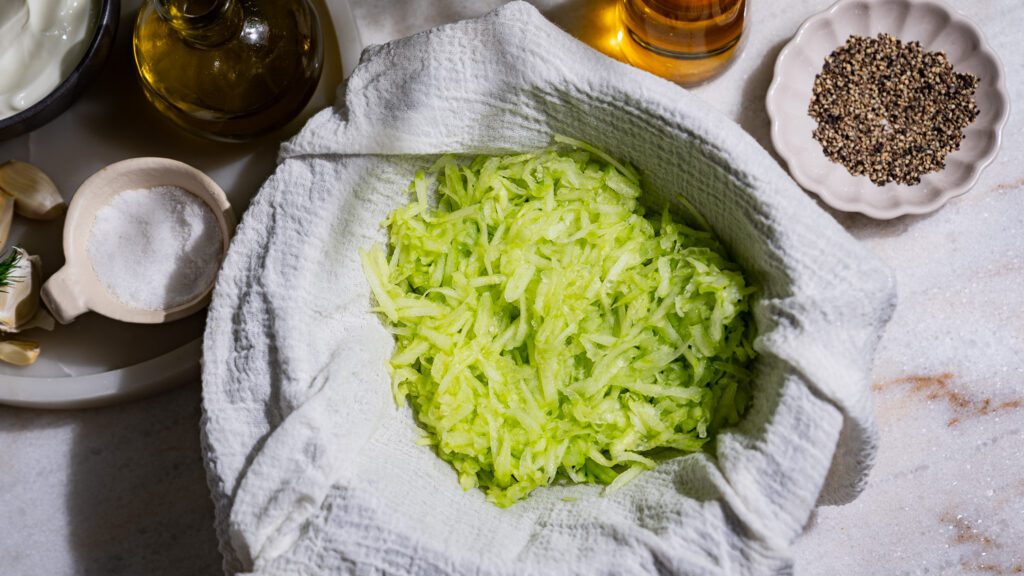
- Grate the cucumber: Then you have to grate it coarsely. The grated cucumber adds an incredible freshness to the tzatziki and gives the dip its characteristic taste.
- Drain the cucumber: The final step is to place the cucumber in a cloth and squeeze as much water out of it as possible. You do this by wrapping the cloth tightly. This creates pressure and the liquid drips out through the cloth.
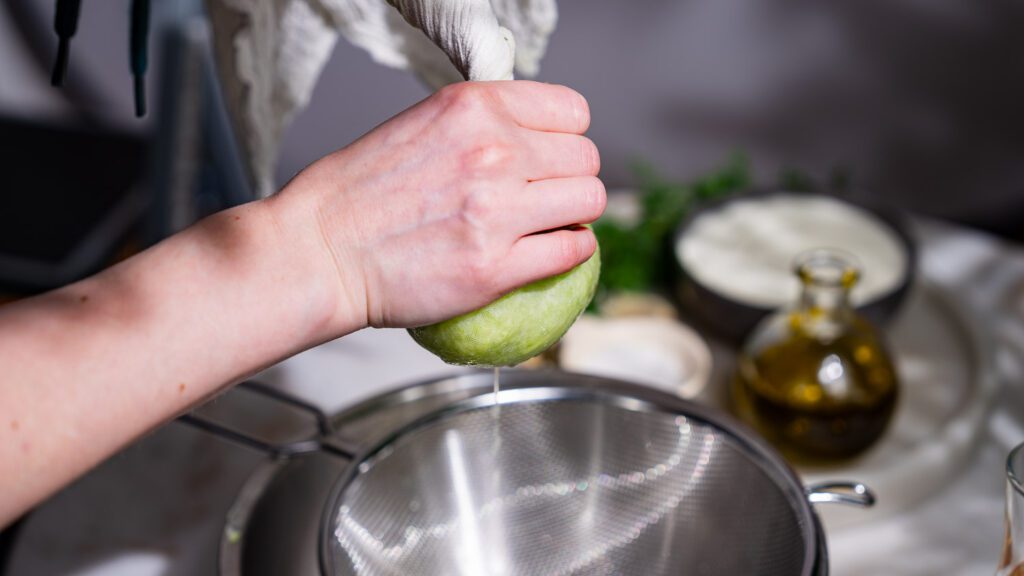
Finding the perfect yogurt for Greek tzatziki
Anyone who has ever made tzatziki knows that it’s not just about what you put in it, but also how you make it. The basis for a traditional tzatziki is, of course, Greek yoghurt or cream yoghurt with a fat content of at least 10%.
It is particularly creamy and, thanks to its high fat content, also particularly tasty. But it is not only the fat content that is decisive. The freshness of the yogurt also plays an important role in the quality and shelf life of the tzatziki.
There are also recipes that use quark or yogurt with a low fat content instead of Greek yogurt, but that wouldn’t be authentic!
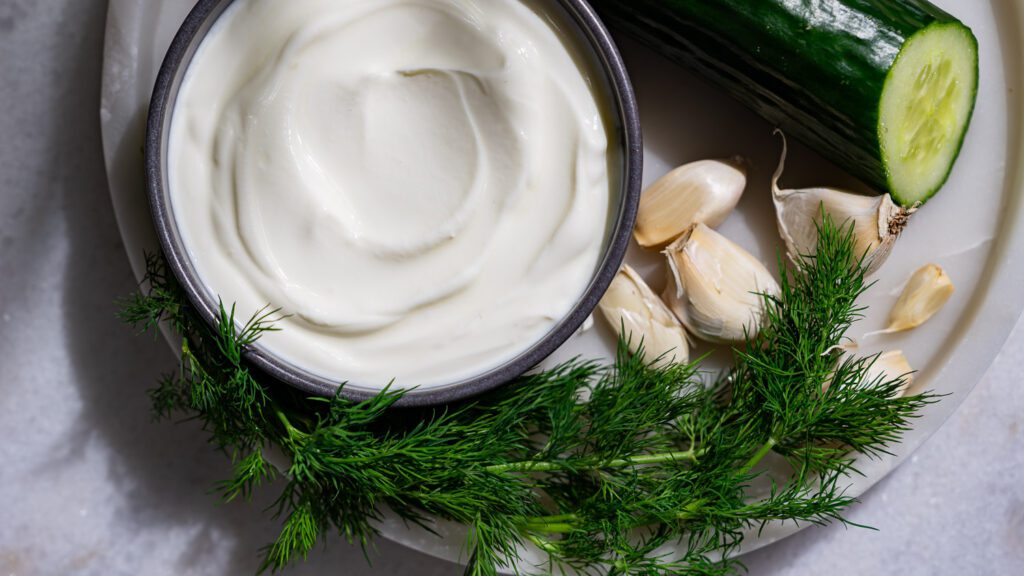
Tips for the typical tzatziki taste
Your yogurt cream tastes perfect as it is, don’t worry! But with a few little things you can take it to a higher level or add your own touch.
- Garlic: You should crush it as finely as possible – make a real paste out of it. You can either grate it finely with a grater, crush it in a mortar, or you can infuse the garlic with salt. You only need a little for the original tzatziki recipe.
- Dill: Here too, I recommend using only a small amount of fresh dill. Only use the tender, elongated leaves.
- White wine vinegar: A little acidity is essential in a dip. Alternatively, you can also use a little lemon juice.
- Olive oil: Drizzle your tzatziki with a good dash of olive oil before serving.
- Spices as a topping: Depending on which direction you want to take your tzatziki, you can also top it with various spices. For a hint of spiciness, I recommend chili flakes, for example. For a touch of Levant, I would recommend sumac or za’atar.
- Olives & herbs: This is more about inspiration – of course you can top your tzatziki with delicious olives and more fresh herbs. This not only looks good, but also adds even more flavor.
In any case, I wish you lots of fun on your journey into Greek cuisine and bon appétit! If you liked the dip or if you have any feedback, suggestions or questions, please leave a comment and give this tzatziki recipe a rating.
The recipe for original Greek tzatziki

Ingredients
- 1 Cucumber
- 1/2 Garlic clove
- 2 g Dill, plucked
- 500 g Greek yogurt
- 1 Tablespoon White wine vinegar
- Salt, pepper
Zubereitung
- Peel the cucumber, cut in half lengthways and scrape out the core with a small spoon. Then grate into small pieces using a grater.
- Carefully squeeze the grated cucumber in a blotting cloth.
- Peel the garlic and finely crush in a mortar or grate on a grater.
- Wash the dill, pluck it from the stalks and chop finely.
- Mix the yogurt with the cucumber, garlic, dill and white wine vinegar. Season to taste with salt and pepper.
- If it's not creamy enough for you, you can also add a little olive oil to the dip.
- Serve tzatziki with meat, vegetables or bread.
Notes
Nährwerte
How long does tzatziki keep and how do I store it?
Tsatsiki is a fresh product with fresh ingredients and should therefore be stored properly to maintain its quality. The delicious yogurt cream stays fresh in the fridge for up to 5 days. You can also prepare them really well the night before and serve them the next day. The dip then infuses well overnight and all the flavors intensify.
Note, however, that the longer you leave the cream to stand, the more liquid it may become.
For optimum storage, tzatziki should be stored as follows:
- In an airtight container
- In the coldest part of the refrigerator, on the bottom shelf
- Refrigerate immediately after each removal
- Avoid opening the container frequently to preserve freshness.
Alternatively, you can freeze tzatziki so that you always have a portion to hand.
What do you eat with tzatziki?
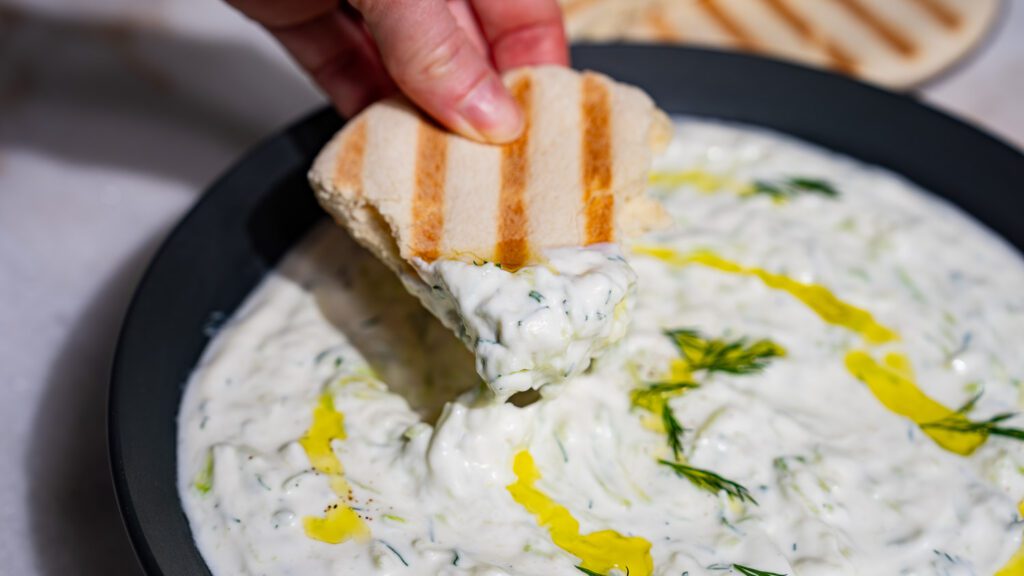
Tsatsiki is not only a delicious dip, but also a versatile side dish that goes well with many different dishes. Traditionally, tzatziki is served with Greek dishes such as meat, vegetables and flatbread. The yogurt cream not only goes perfectly with gyros and crispy chips, but also with falafel and anything else that comes off the grill.
You can also follow me on Instagram for even more inspiration about Levante cuisine.







